Overlooked (But Very Notable) Deaths In 2020 (Part 2)

Part 2 of our annual look at the overlooked deaths of the year. Read part 1 here.
May 8 - A Las Vegas Entertainment Icon

Who?
Roy Horn, half of Seigfried and Roy
How?
Coronavirus.
His Story:
Perhaps you remember the story of the famed Las Vegas magicians Siegfried and Roy and how a tiger mauled Roy back in 2003. Most people aren't badass enough to walk away from that kind of attack. Fewer are badass enough to come back and do a performance six years later, with the same tiger that bit them. Well, never doubt German fortitude, as we learned from the previous entry. Roy Horn had some real balls.
He and his friend, Siegfried Fischbacher, created their magic and entertainment act and debuted in Vegas in 1967. Their work ethic was astounding, as the two usually did six shows a week, 44 weeks each year. They were an absolute fixture on the Strip, and their shows grossed over a billion dollars. When the catastrophic tiger attack on Roy ended the duo's run at the Mirage hotel, it was a little ironic since Roy had first floated the idea of using a dangerous animal in their routines (it was his personal pet cheetah). The attack gave him devastating neck injuries and a stroke during recovery, yet he still pushed the world to help preserve the lives of jungle cats, even opening a $10 million facility to assist in doing so.
May 14 - A Major League Baseball First
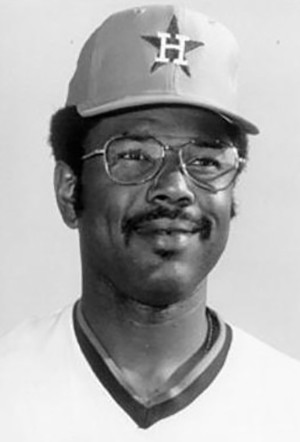
Who?
Bob Watson, MLB player and general manager.
How?
Kidney disease.
His Story:
Bob "The Bull" Watson wasn't just a good baseball player; he also had the unique distinction of scoring the millionth run in Major League Baseball history. During his tenure with the Astros, Yankees, Braves, and Red Sox, he earned a few All-Star nominations and even got to take part in the film The Bad News Bears. And that's not a bad little career at all, but Watson was just getting started.
After his playing days were over, he worked as a coach and assistant general manager before taking over full GM duties for the Houston Astros in 1993. This made him the first black man to hold that position in the history of Major League Baseball. And still, he wasn't done. He joined the Yankees in the same capacity and led them to their first World Series win in nearly 20 years in 1996. But the Yankees were still a mess internally, and Watson decided to resign the next year, taking on a series of administrative jobs with Major League Baseball. But he helped to build a winner, and no Steinbrenner can take that away from him.
June 26 - The Artistic Visionary for The Big Apple
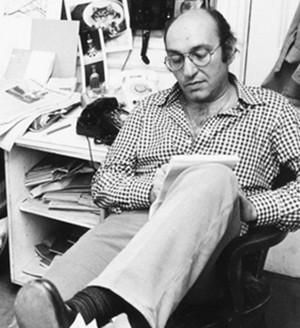
Who?
Milton Glaser, artist.
How?
Stroke.
His Story:
There are things you just associate with New York City: looming skyscrapers, the musky aroma of subway urine, and the "I <3 NY" logo, with the big red heart. It's synonymous with NYC, to the point where you couldn't imagine that logo and merchandise in every souvenir shop from Times Square to Harlem. And that was the creation of one man, Milton Glaser.
Not only was Milton Glaser co-found New York magazine, but he also created a pretty timeless portrait of Bob Dylan, a logo for Brooklyn Brewery beer, and lent his expertise to the advertising-centric AMC show Mad Men. But it was during a boring cab ride that he doodled on a piece of scrap paper with crayon and created one of the most iconic symbols ever made for a city. It's part of the permanent display at the Museum of Modern Art and one of the most amazing examples of what you can do with the right font and simplicity. Looking at you, every death metal band ever.
July 8 - A Hero of the AIDS Epidemic
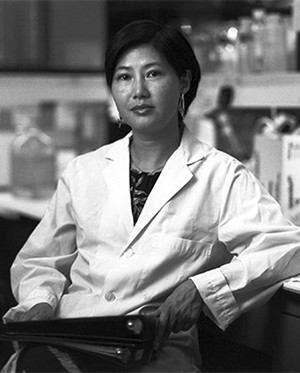
Who?
Flossie Wong-Staal, molecular virologist.
How?
Pneumonia.
Her Story:
Flossie Wong-Staal was so good at her job that she was the most-cited female researcher of the '80s. Her work was referenced 7,772 times in medical journals, which roughly translates to 3 million retweets? Maybe? What we're saying is that she was dominant in her field of molecular virology. She got her start after coming to the U.S. from Hong Kong and taking a job at the National Institutes of Health, quickly becoming one of the top researchers there and heading up the tumor cell biology lab.
Where she really stood out was when the AIDS crisis struck in the early 1980s. She had already been working on studying retroviruses, which the scientific community didn't even really believe in at the time. Retroviruses work their way into the human genome itself, like a Bruno Mars song, and are a real bitch to try and eradicate. Flossie Wong-Staal went to work to decipher AIDS and learned that it was indeed caused by a retrovirus that they were able to clone, called HIV. Flossie's work and leadership uncovered the culprit behind AIDS and directly led to better treatments and diagnoses.
July 17 - MLK's field general
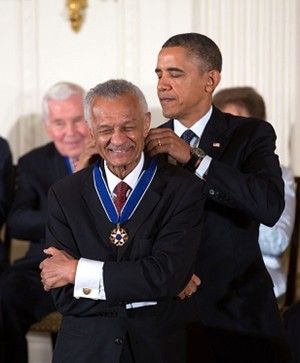
Who?
C.T. Vivian, civil rights leader.
How?
Natural causes.
His Story:
You're not in bad company at all if you worked alongside Martin Luther King, Jr.. C.T. Vivian was basically MLK's field general, advising him in his marches and boycotts and then helping to organize the Freedom Rides that saw people of color traveling on buses throughout the segregated southern United States.
Vivian then openly protested the racist sheriff of Selma, Alabama, and helped register Black people to vote. This bought Vivian a punch in the face from said sheriff on live television, which put Selma even more in the national consciousness. You might remember the name Selma as the place where the black march on the Edmund Pettis Bridge occurred, and that was soon after Vivian helped to embolden them. What better honor later in life than to receive the Presidential Medal of Freedom from the nation's first Black president, Barack Obama? That's also pretty good company.
July 26 - The Man Who Helped Us Interact With Computers
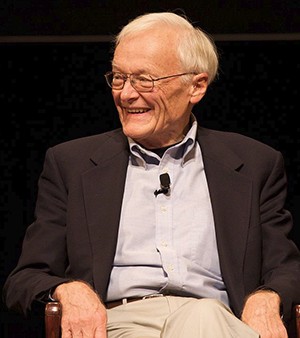
Who?
William English, engineer.
How?
Respiratory failure.
His Story:
If you're reading this on a computer, look down at your right hand. We already know what the left one is doing. That little clicky mouse is your ticket to every single link, copy-and-paste, and scroll that you conduct in your daily internettings. It's so intrinsic to the experience that life without it would be sweat-inducing.
Bill English helped to make that little device along with his partner, Douglas Engelbart. If you had to guess when the first prototype was unveiled, you'd probably think it was the 1980s or so, right? Try 1968, at a software expo, a time when computers were roughly the size of a bathroom. The two men knocked it out of the park at that convention, later called the "Mother of All Demos," also introducing early versions of hypertexts (links you could click) and a primitive version of documents that could be shared and edited in real-time, sort of like Google Docs. But that mouse was something extraordinary, and he would continue to alter and polish its design in the coming years, just in time for the personal computer wave that the '80s brought on.
August 30 - A Pioneer of March Madness

Who?
John Thompson, NCAA basketball coach.
How?
Undisclosed.
His Story:
The Georgetown Hoyas men's basketball team was an absolute menace to the NCAA championship tournaments of the '80s and '90s, thanks in part to a constant slew of otherworldly talent, but also because of their stalwart coach, John Thompson. His leadership in 27 seasons at Georgetown forged a powerhouse of a sports program. They got their title in 1984, and Thompson became the first black coach to win the NCAA basketball championship. But there's more to his story.
Thompson got wind in the late 80s that some of his players were hanging around with a notorious Washington, D.C.-area drug lord named Rayful Edmond III. Thompson opted to play papa bear and invited Edmond to meet him at his office to discuss leaving his players alone. Things quickly went south, and Thompson, a formidably-sized man, tore into Edmond. The drug dealer apparently never commiserated with a Georgetown player again. Thompson was fearless and probably felt even more so after switching plans to do a radio show and canceling a flight. A flight on September 11, 2001 that would end up crashing into the side of the Pentagon.
September 11 - The Father of Reggae
Who?
Toots Hibbert, musician.
How?
Possible COVID-19 complications.
His Story:
Many music fans, if you asked them, would point to Bob Marley as a founder of reggae music. And it's true, he did help develop the music and bring it to a larger audience. But Frederick "Toots" Hibbert and his song "Do the Reggay" from 1968 probably was one of the hits that announced a new kind of music entering the world. Or at least, earning the ears of people the world over.
Hibbert and his band Toots and the Maytals hailed from Trench Town, Jamaica, where Marley would also put his roots. The band would perform for a half-century, drawing from sources as far-ranging as church music and Elvis to make their own form of reggae music. Reggae, as it happens, comes from a Jamaican word, "streggay," which means scruffy or raggedy. Toots embraced that. The world increasingly embraced him, as he earned a Grammy finally in 2005 for his album True Love. He was prolific to the end, putting out new music just weeks before he passed away.
September 12 - A Master of Heists
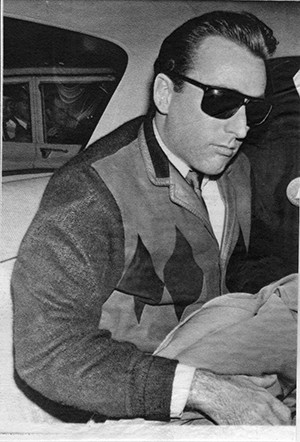
Who?
Jack "Murph the Surf" Murphy, jewel thief.
How?
Heart and organ failure.
His Story:
We like our heists and thefts to be heavily romanticized. Think of Ocean's Eleven or Heat. But not Hudson Hawk, because ew. Things should run like clockwork, the object to be stolen needs to be something grand or unattainable, and the people running the theft should be like artists. Jack Murphy was a thief of the highest order.
Nicknamed "Murph the Surf" because of some surfing accolades when he was younger, Murphy and his gang of bandits pulled off a truly unbelievable heist at the American Museum of Natural History in New York. Their target: the Star of India sapphire, the world's largest, at a weight of 563 carats. They made off with 23 other jewels and stole away into the Manhattan night in separate cabs. Murphy and his crew soon began blowing their heist money like crazy, however, so they were soon captured. Murphy did 21 months in jail, but once he was released, he helped murder two people, which put him back in the clink until 1986. He spent the rest of his life working with the prison ministry to help put inmates back on a positive track and keep them away from shiny, glimmering things.
September 13 - The Lady Who Made Presidents Look Presidential

Who?
Lillian Brown, makeup artist.
How?
Stroke.
Her Story:
In the high-def era, it's pretty clear on television who has a face that is graceful and poised and who looks like they have been on a coke bender for a week. The office of the president demands that a person look stately, as that's the face you're going to be stuck with for several years. Lillian Brown was the woman who made nine presidents and other historical figures look like they were portrait-ready.
Brown began as a school teacher in the '50s but then shifted to TV shows in her Virginia hometown. As she got guests ready for their camera time, across the hall, the political show Face the Nation noticed how good they looked, while their guests looked like a bunch of slimy hobos. They approached Brown and offered her a job, which opened the door to doing makeup for all sorts of political folks. She got her biggest client in John F. Kennedy, getting him ready for his infamous debate with Richard Nixon, who came off as old and greasy compared to the fresh-faced man who would become president. Ironically, she would do Nixon's makeup for his resignation speech in 1974. Lillian also gussied up Martin Luther King, Jr, Ronald Reagan, and Bill Clinton, but also didn't pigeonhole herself into makeup. Her later years would see her teaching communications and public speaking at places like Yale and Georgetown.
October 6 - A Voice for the Trans Community
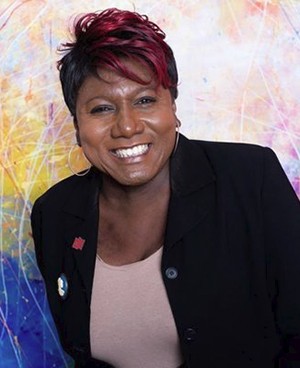
Who?
Monica Roberts, activist.
How?
Natural causes.
Her Story:
Monica Roberts formed the TransGriot blog in 2004, "griot" meaning a kind of storyteller in West Africa. And that's what she did: she told stories that weren't being covered by any other news outlets. Stories of Black trans people and their everyday lives, but also Black trans people who had lost their lives -- the kinds of folks the news doesn't tell you about. Or that the papers might have misgendered or not have even identified at all. Monica Roberts made sure they had a voice, even after their passing.
Roberts' efforts shone a light on a section of the population who suffered from an insane rate of homicide. The police department in her hometown of Houston began working closely with her, but it's still not an issue that's going away: 2020 was the deadliest year on record with at least 31 trans murders that have been reported. Roberts' life was devoted to trying to give a name to those victims (which, of course, there were surely countless more). She found her own name and identity in the '90s after transitioning herself; it was only fair that people like her became more than a "trans murder victim."
October 21 - A Disease Assassin

Who?
J. Michael Lane, epidemiologist.
How?
Colon cancer.
His Story:
By the time the 20th century hit, people were already tired of smallpox's bullshit. Since the 1700s, it had been the scourge of the world, a global epidemic, killing hundreds of millions of people. Smallpox's pus-filled rashes had been devastating to the health of populations ever since the times of the Egyptian pharaohs -- when they thought you could blow smallpox scabs up their noses to help cure it.
J. Michael Lane took a position with the Centers for Disease Control in 1963 and quickly began hunting smallpox flare-ups around the globe. He helped remote locations quell their outbreaks by working with local community leaders directly, instead of issuing general mandates, and by employing different methods of vaccination that targeted contacts of exposed patients. Lane was rewarded by his exhaustive efforts, as smallpox was declared dead by the World Health Organization in 1980. And even though it was gone, the U.S. and Russia still kept samples, which Lane had issues with until his dying day because two countries perpetually at loggerheads shouldn't have dormant viruses in their back pockets.
November 9- An Animation Titan
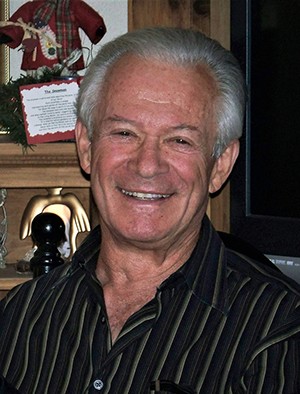
Who?
Ken Spears, TV writer and producer.
How?
Complications from Lewy body dementia.
His Story:
If you list off some of the greatest cartoon characters of all time, Scooby-Doo is likely to be in there at some point. The chemistry between Scoobs and Shaggy, and their fondness of giant ass post-bong-rip sandwiches is something even people who've never seen the show are aware of. Ken Spears, along with his partner Joe Ruby created the lovable Great Dane together. The show debuted in 1969, with Spears and his partner creating, writing, and editing all of the first two seasons for Hanna-Barbera Productions (the Lennon-McCartney of cartoon houses).
Spears and Ruby didn't stop there, also creating Jabberjaw, before starting their own company and producing Alvin and the Chipmunks and a Mister T. cartoon. They really seemed to accept canines as their wheelhouse, also creating Dynomutt, Dog Wonder, and The Houndcats. Of course, nothing stood the test of time quite like Scooby-Doo, and it shall continue to do so, Freddie Prinze Jr. reboots notwithstanding.
Top image: Rblfmr/Shutterstock, Lawrence Jackson/White House, National Cancer Institute, Karl Simpson/Wikimedia Commons





